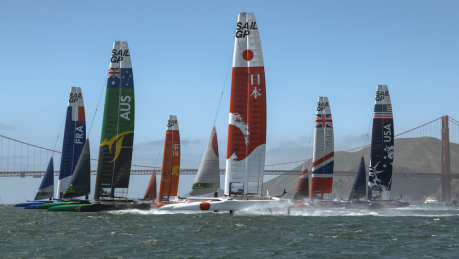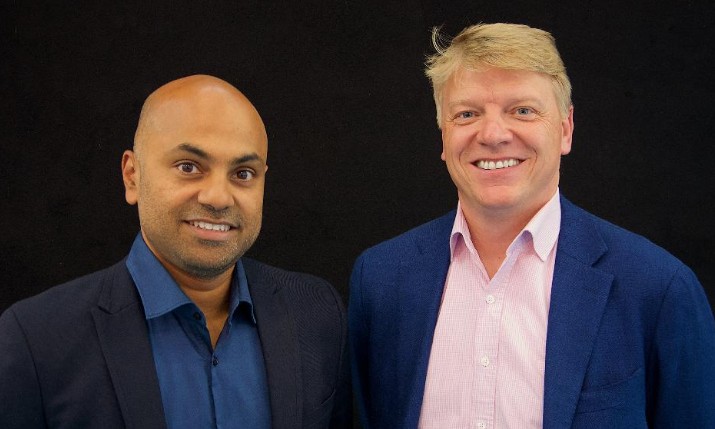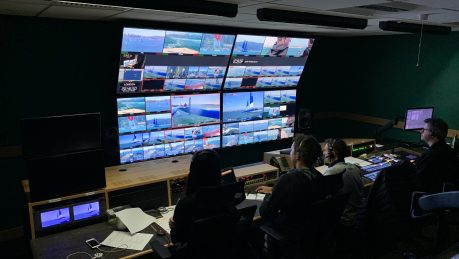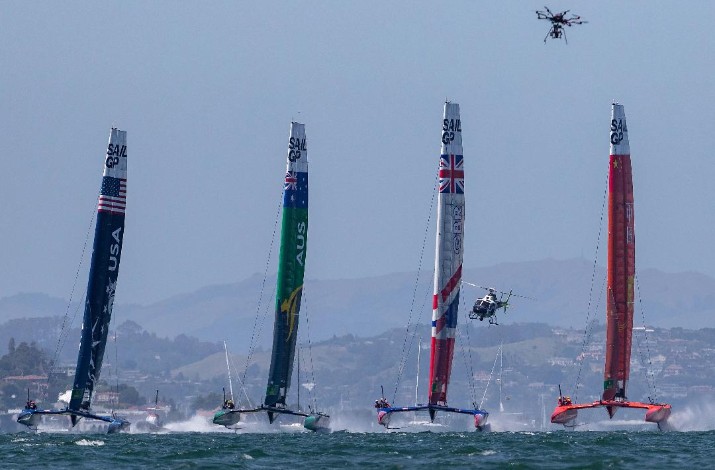By David Fox

It shows a true commitment to remote production when you choose the location for your first ever event in a new sport to be on the other side of the world from your production gallery.
For SailGP, its first-ever race was in Sydney this year (15-16 February), more than 17,000km from its production base in west London.
SailGP uses identical, technologically-advanced 50ft (15.24m) catamarans, each equipped with 1,200 sensors (with the data shared amongst the fleet). The data is also used to create a second-screen experience where viewers can get a better insight into the action.
“The main reason to go to such lengths to have a remote production was sustainability – both financially and environmentally.”
They race close to shore, for spectator excitement, with six races, including a two-boat final, over two days – except for the last event in Marseille in September, when there will be nine races, including the final, over three days. The ultimate winner takes the US $1m prize.
It currently has six teams, but Leadsom hopes to expand that to ten, and add more races over the coming years. The organisation is looking for a venue in China, another in the US and one in Japan.
Sustainable production
The main reason to go to such lengths to have a remote production was sustainability – both financially and environmentally, says Leadsom.
Of the 135 production staff, 70 remain in London, which cuts costs and air miles considerably – not just for staff but also equipment.

Sunil Patel of Whisper Films with SailGP’s Sam Leadsom
Because the sport is new, there were no legacy interests to consider when it came to deciding how to produce it.
That said, they took heed of the 2011 and 2017 models for the America’s Cup, which they produced, of having a truck on location, “but we thought remote production was a better way to go,” suggests Warren Jones, SailGP’s director of technology.
Although, “strictly speaking, it’s not fully remote, because we do have people on the ground,” at each location, adds Sunil Patel, chief executive of Whisper Films (pictured above, right), which is producing the coverage.
For Sydney, they had two 1Gbps lines back to London, completely separate for redundancy, with 220 milliseconds delay on one and 250ms on the other.
Each catamaran is fitted with two cameras, with drone, helicopter and shore cameras as well.
“We had to capture the action, to put the audience in the heart of it,” says Patel. “Those boats move incredibly quickly, and there are a lot of challenges, especially the weather.” The recent New York race was run in blustery conditions, causing the Great Britain yacht to capsize before the race.
“It is a complex technical solution we are providing, but better than getting in local OB trucks in each place or shipping a huge amount of kit. It’s the same operation each time, and you can get quality and consistency of staff.”
The production has four galleries running at the same time at Timeline TV’s HQ in Ealing Studios, London: one for the English language feed, one for the world feed, plus Japanese and Mandarin feeds.
Doing multiple language feeds on location (they do six in all) would be expensive, but it is cheap and easy to add a gallery and edit suite in Ealing.
“We have a very good workflow,” says Patel, delivering live action, plus highlights and clips.
It has broadcast agreements spanning some 91 countries, plus multi-platform digital distribution, including Facebook. In Europe, it is broadcast by BT Sport (UK & Ireland), Canal+ (France), Arena Sport (Balkans) and Viaplay (Scandinavia), with CBS for the US, Fox Sports for Australia and South East Asia, DAZN in Japan, SuperSport (Sub-Saharan Africa), Sky Sport (New Zealand) and Tencent Sports in China.

Speed of connection
Managing the relationship between the two production teams can be a challenge. For example, for Sydney, they had to move the London team on to Australian time.
They took lessons from other sports, such as Formula One, and have a permanent video connection between London and the location, “so people feel part of the same team,” explains Patel.
A lot of trust is put in the recce, for doing the camera plan, to make it easier for the director in Ealing to direct the drone, helicopter and chase boat at a distance.
One moment of panic was when, 20 minutes before its very first feed, the power went to its camera positions on Shark Island in Sydney Harbour, and it had to go to VT. Fortunately, they found out a local had plugged his cooler box into the generator, so it was quickly back on track.
“Low latency is essential on remote productions. The quality of the pictures is also important. The director has to be able to talk to the helicopter pilot as if he’s out there,”
Although “it does have cost benefits, remote production can compromise results by 10-15%,” admits Patel, which is why it’s so important to get buy-in from everyone. To help achieve this, they try to shuffle the team around so that everyone gets to travel.
“My goal was to have as little compromise as possible for the production,” says Daniel McDonnell, managing director of Timeline Television, and he believes they achieved that.
“It is a complex technical solution we are providing, but better than getting in local OB trucks in each place or shipping a huge amount of kit. It’s the same operation each time, and you can get the quality and consistency of staff.”
For many of the staff, not travelling is a bonus. They get to work on an exciting production without interrupting their daily lives.
It also helps considerably in choice and use of the locations, as having five galleries in Ealing reduces the need for space and accommodation on site.
Robust and diverse
For McDonnell, the key to the production is a robust connection.
“Low latency is essential on remote productions,” he says. “The quality of the pictures is also important. The director has to be able to talk to the helicopter pilot as if he’s out there,” and it needs comprehensive data links, whether for tally or boat telemetry for the graphics.
Because it is using totally diverse routes back, there are no issues if one fibre goes down. However, they do have a disaster recovery facility on-site, in the unlikely event both lines do go down.
With such vast distances, particularly for Sydney, less so for San Francisco, the speed of light is a factor, as it travels 8,000km per frame of video, effectively giving about four to five frames back and forth to Sydney.
This meant they had to reduce the encoding and decoding latency to compensate, to keep it to under half a second in total. In New York, the latency was only a couple of frames.

A drone and helicopter chase the SailGP action in San Francisco
For talkback they had a “very complex voice-over-IP system,” with multiple channels on site, but “the director said the talkback was better than he’s seen when doing football at a stadium.” Also, if any of the galleries in Ealing selects a particular camera, it gets a cue light.
“Sailing is quite an unusual OB, in that all the cameras are RF,” continues McDonnell.
SailGP uses Timeline-designed waterproof cameras onboard each boat, delivering the same 20Mbps quality signals to Ealing as come off the catamaran, with some 30 feeds in all coming back to London – where there are 30 wireless receivers.
It has five EVS systems in Ealing, with multiple graphics systems, including augmented reality. “Once all the signals are back, we can make multiple versions without the large expense,” he adds. It has lots of edit suites, so can easily add more.
“It’s scalable, so we can easily add more languages or broadcaster-specific feeds.” It also delivers 16 feeds OTT, with all the on-board and aerial cameras, which can be taken by broadcasters for their own apps. All the content is also archived and put on a MAM as it happens.
In future, it hopes to add 360-degree cameras for use with VR headsets, so viewers can feel like they are on the boats.
